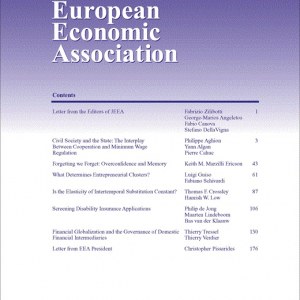
Hochguertel, S., Alessie, R. and Weber, G. (2005). Consumer Credit: Evidence from Italian Micro Data Journal of the European Economic Association, 3:144--178.
-
Affiliated authorStefan Hochguertel
-
Publication year2005
-
JournalJournal of the European Economic Association
In this paper we analyse unique data on credit applications received by the leading provider of consumer credit in Italy (Findomestic). The data set covers a five-year period (1995-1999) during which the consumer credit market rapidly expanded in Italy and a new law (the usury law) came into force that set a limit on interest rates charged to consumers. We compute behavioural changes by controlling for changes in the observable characteristics of the Findomestic clientele and argue that, under suitable identifying assumptions, these changes can be given a structural interpretation. If the usury shock is assumed to have affected credit supply but not credit demand-that is, if the usury law had a differential impact on the supply of various types of credit but a uniform impact on demand-then we can identify and estimate a demand equation. Our key finding is that demand is interest-rate elastic, particularly in the more affluent North. {\textcopyright} 2005 by the European Economic Association.